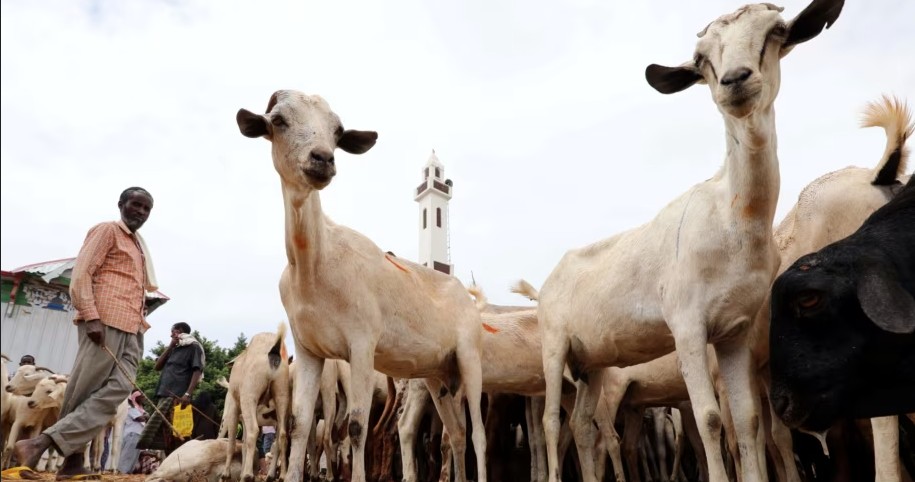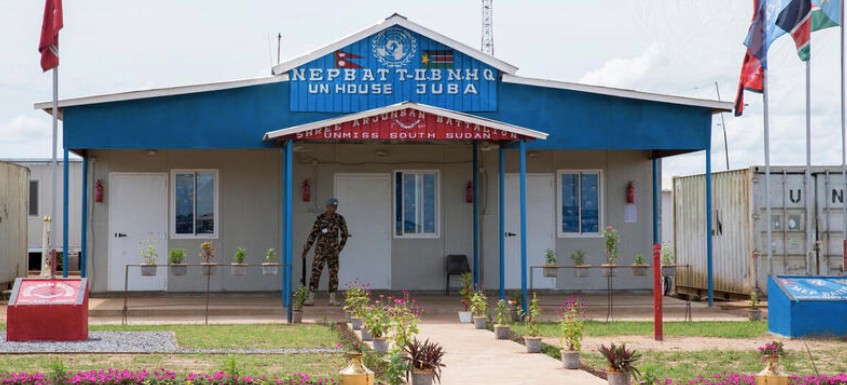Somalia’s livestock exports set to top Sh129 billion as war and bans hit rivals

Experts warn, however, that to sustain this momentum, Somalia must enhance regulation, invest in infrastructure, and build climate resilience to support traders and herders.
Somalia’s livestock exports are projected to exceed $1 billion (Sh129.2 billion) this year, driven by reduced competition from Australia and conflict-stricken Sudan.
Government data shows that livestock earnings nearly doubled from $523 million (Sh67.6 billion) in 2021 to $974 million (Sh125.8 billion) in 2024, cementing livestock as Somalia’s largest source of foreign income.
More To Read
- Nine dead, 17 injured in RSF drone strike on Sudan’s Dilling military hospital
- Sudan’s RSF seizes Heglig oilfield in major strategic blow to army amid escalating conflict
- WHO calls for ceasefire after deadly attacks on civilians in Sudan kill 114, including 63 children
- Children killed in Sudan’s South Kordofan drone attacks as humanitarian crisis worsens
- Sudan signals willingness to coordinate with UN despite ongoing RSF clashes
- Sudan military leader Burhan rejects US-led ceasefire plan, accuses Quad of favouring RSF
The surge has been fueled by strong demand from Gulf nations such as Saudi Arabia and the United Arab Emirates, which rely heavily on imported animals.
Qaasim Abdi Moallim, Director of Animal Health at Somalia’s Ministry of Livestock, attributed the sharp rise in exports to favourable market conditions.
“This allowed Somalia to take advantage of the situation and accelerate its livestock exports,” he said in a statement, according to Bloomberg.
Moallim cited Sudan’s ongoing civil war—which has devastated one of the region’s major livestock economies—and Australia’s May 2024 decision to phase out live sheep exports by sea by 2028 as key factors.
Sudan’s conflict, now in its second year, has disrupted trade routes and supply chains, while Australia has drastically reduced live-animal shipments—exporting just 652,000 sheep in 2022–23 compared to 5.9 million two decades ago.
These developments have opened new market opportunities for Somalia, strategically located near the Gulf.
According to the Sudan Transparency and Policy Tracker, Saudi Arabia alone imported $715 million (Sh92.4 billion) worth of live animals in 2023, much of it supplied by Somali traders.
Annual exports
Somalia is home to an estimated 57 million livestock—camels, cattle, goats, and sheep—and exports between four and six million animals annually. Despite decades of conflict and instability, livestock remains the backbone of Somalia’s economy.
Agriculture Minister Mohamed Abdi Hayir noted that the sector’s growth has been supported by improved animal health standards, expanded market access, and the adoption of digital tracking systems that meet Gulf import requirements.
This year’s expected $1 billion (Sh129.2 billion) in livestock export earnings will more than double the government’s domestic revenue—currently about $430 million—and strengthen the national budget of $1.36 billion (Sh175.7 billion), much of which still relies on donor funding.
Experts warn, however, that to sustain this momentum, Somalia must enhance regulation, invest in infrastructure, and build climate resilience to support traders and herders.
Top Stories Today












































